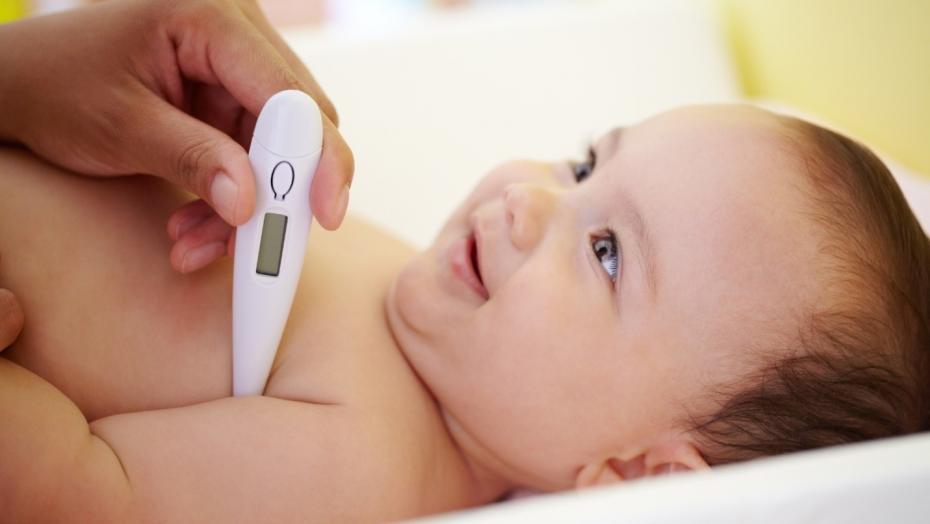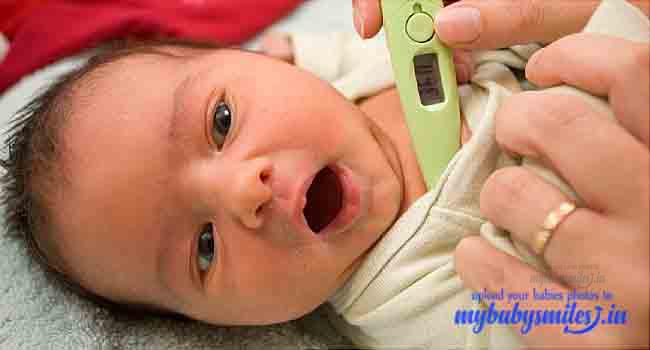Fever in Infants and Children
What is fever in infants and children? How can be it prevented?
Fever is a sign that your body is sick or has an infection. A fever helps kill infections, bacteria, and viruses that are causing the fever. Your child has a fever if his or her body temperature his higher than normal. A normal temperature is 98.6°F when checking by mouth. Some doctors ask you to check your baby or young child’s temperature rectally (in their bottom). Normal for that method is 99.6°F.
Symptoms of fever in infants and children
- Constant vomiting or diarrhea
- Dry mouth
- Earache or pulling at ears
- Fever comes and goes over several days
- High-pitched crying
- Fussiness
- No appetite
- Pale appearance
- Seizures
- Severe headache
- Skin rash
- Sore or swollen joints
- Sore throat
- Stiff neck
- Stomach pain
- Swelling of the soft spot on an infant’s head
- Unresponsiveness or limpness
- Wheezing or problems breathing
- Whimpering

What causes fever in infants and children?
Most fevers are caused by infections (bacteria or virus). Other reasons for a fever
include
- Certain medicines. This would include antibiotics, anti-seizure, and blood pressure
medicines. - A heat-related illness.
- Cancers
- Autoimmune disorders (when your body mistakenly attacks healthy tissue).
Some childhood vaccinations
How is fever in infants and children diagnosed?
Numerous specialists analyze a fever as an oral temperature above 99.5°F. They analyze fever as a rectal temperature above 100.4°F. In any case, fever benchmarks likewise rely upon age, so what might be a fever in one individual may not rate as a fever in another person.
To take your youngster’s temperature rectally, utilize an advanced thermometer. Spot your youngster on their stomach over your lap. Apply oil jam (brand name: Vaseline) to the tip of the thermometer. Supplement it a large portion of an inch into your kid’s base. Stop on the off chance that you feel any opposition. Keep the thermometer
still and don’t give up. At the point when the thermometer blares, expel it and check the computerized perusing. Taking temperatures rectally is the favored strategy for kids.
To take your youngster’s temperature orally, utilize a computerized thermometer. Spot the finish of the thermometer under their tongue. Go towards the rear of the mouth. Have your youngster close their lips around the thermometer. Advise your youngster not to chomp down or talk. At the point when the thermometer blares, evacuate it and check the advanced perusing.
Never utilize a mercury thermometer. Mercury is poison.
Other temperature-taking tips include:
- Name your rectal thermometer with the goal that it isn’t inadvertently utilized in
your kid’s mouth. - Start by cleaning the thermometer in warm, foamy water. Wash well with cool water.
- For oral temperatures, hold up 20 minutes after your kid eats or beverages hot or
cold nourishments and beverages before taking their temperature. - Try not to package your infant or kid up too firmly before taking their temperature.
- Try not to take your kid’s temperature directly after the individual in question has
had a shower. - Never disregard your youngster when utilizing a thermometer.
- At the point when you are done, clean the thermometer again with scouring liquor or
with cool, foamy water.
Can fever in infants and children be prevented or avoided?
Fevers brought about by ailment or disease can be dodged by keeping away from the
things that cause sickness and contamination. Fevers brought about by inoculations
can be maintained a strategic distance from by giving your youngster acetaminophen.
This is an over-the-counter medication (brand name: Tylenol). This ought to be given
just previously or directly after the immunization.
Fever in infants and children treatment
Acetaminophen can be given to diminish fever. Ibuprofen (brand names Youngsters’ Advil, Kids’ Motrin) is another drug that can be utilized to bring down a fever in kids more seasoned than a half year of age. Approach your primary care physician for the right measurements. This will change by your kid’s age and weight. Try not to give your kid drug on the off chance that the individual in question is between 3 months and 3 years old and has a temperature of 102°F or lower. On the off chance that your kid is pain-filled and particular, and their temperature is above 102°F (38.8°C), you might need to give the person in question acetaminophen.
Tips for giving medicine:
- Don’t give more than 5 doses in 1 day.
- Don’t give a baby younger than 2 months of age any medicine unless your doctor tells
you to. - Read package directions carefully.
- For liquid medicines, use a special measuring device to get the right dose. You can
get one at your drug store. An ordinary kitchen teaspoon may not hold the right
amount of medicine.
If your infant is more youthful than 3 months old and has a rectal temperature of 100.4°F or higher, call the specialist or go to the crisis room. A fever can be an indication of a genuine disease in youthful infants.
Never give your youngster ibuprofen under any conditions. Ibuprofen can cause Reye’s disorder. Reye’s disorder is a genuine youth sickness that can prompt demise. Try not to offer headache medicine to kids more youthful than 18 years old.
Giving your kid acetaminophen and a hot shower may bring down their fever. Give the acetaminophen before the shower. A shower without medication will make your youngster shudder. This will raise their internal heat level. Never use scouring liquor or cold water for showers.
Living with fever in infants and children
It’s important to make your child comfortable when he or she has a fever. Things that
can help include:
- Give your child fluids to prevent dehydration (not enough fluid in the body). It will
help the body cool itself. Water, clear soups, popsicles, and flavored gelatin are
good choices. - Don’t force your child to eat if he or she doesn’t feel like it.
- Make sure your child gets plenty of rest.
- Keep the room temperature at about 70°F to 74°F.
- Dress your child in light cotton pajamas. Overdressing can trap body heat and cause
your child’s temperature to rise. - If your child has chilled, give him or her an extra blanket. Remove it when the chills
stop.
Read:
